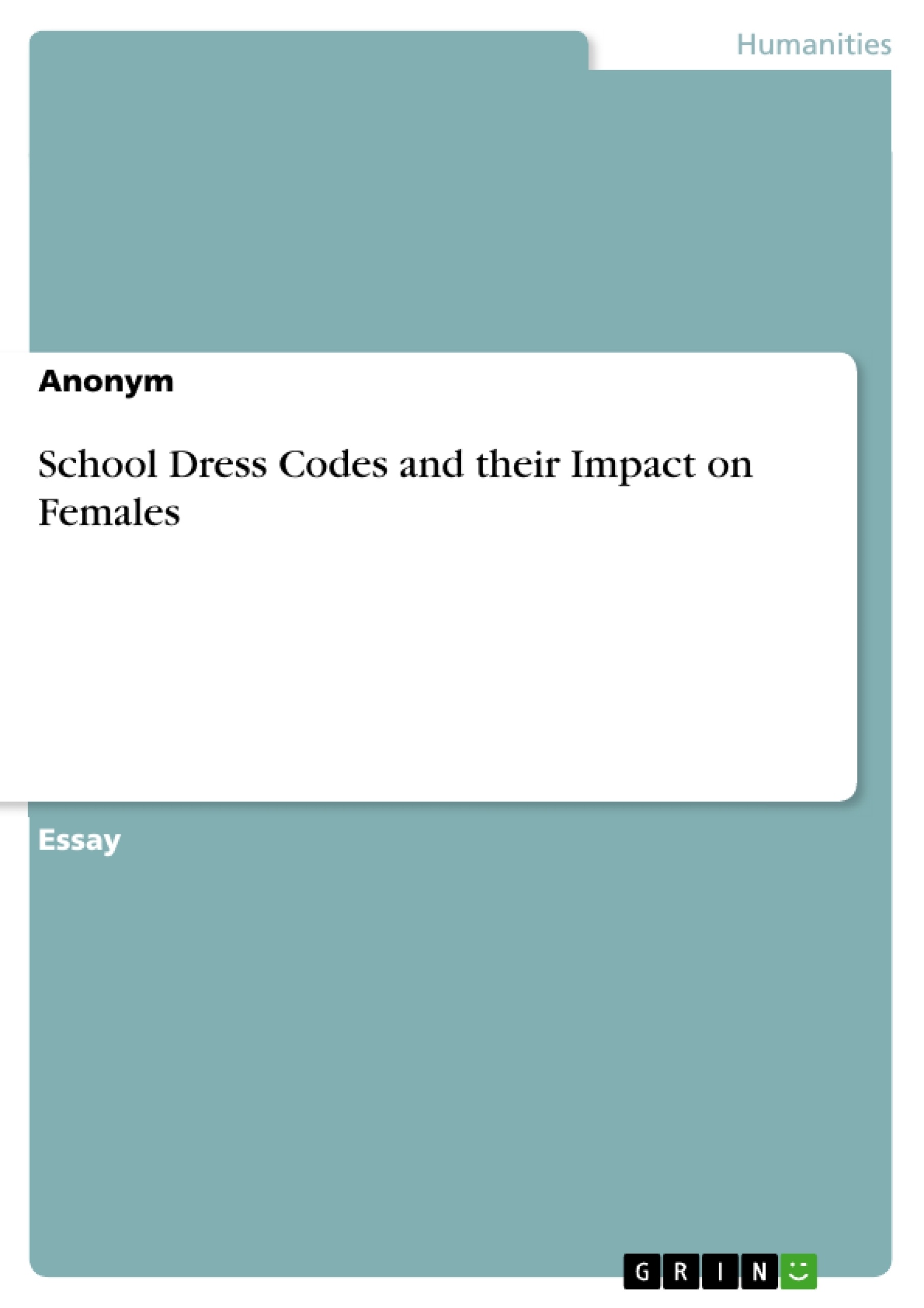In recent decades, rules regarding dress codes have increased drastically. However, recently, a new concern has arisen. Are dress codes ethical? Are they considered fair? Not surprisingly, dress codes have proven to be discriminative against females, whether in relation to their hairstyle, attire, or even make-up.
Inhaltsverzeichnis (Table of Contents)
- Social Mobility: The Extent to Which School Dress Codes Are Biased Against Females
- History of Gender Bias in Education
- The Impact of Dress Codes on Girls' Education
- Dress Code Prejudice Against Minority Groups
- Solutions to Dress Code Issues
Zielsetzung und Themenschwerpunkte (Objectives and Key Themes)
This text explores the issue of gender bias in school dress codes, focusing on the impact on girls' education and social mobility. It examines the historical context of gender bias in education, explores the specific ways in which dress codes discriminate against girls, and considers the broader societal implications of these practices.
- Gender Bias in Education
- The Impact of Dress Codes on Girls' Self-Image and Education
- Dress Code Prejudice Against Minority Groups
- The 'White Male Default' Trend in Dress Codes
- Solutions to Address Dress Code Inequality
Zusammenfassung der Kapitel (Chapter Summaries)
- This chapter introduces the topic of school dress codes and their potential bias against females. It examines how dress code rules on women's appearance have increased, while regulations for males remain minimal, leading to limitations on girls' freedom and self-expression.
- This chapter traces the history of gender bias in education, highlighting how girls have historically been disadvantaged in access to education and opportunities. It contrasts the historical prioritization of boys' education with the need for equal opportunities for all genders.
- This chapter delves into the effects of dress codes on girls' education. It examines how dress codes reinforce negative stereotypes about girls' roles and appearances, leading to a perception that girls' education is less important than boys'.
- This chapter explores the discriminatory impact of dress codes on minority groups, particularly girls of color and transgender students. It examines how these dress codes perpetuate both sexism and racism, highlighting the 'white male default' trend.
Schlüsselwörter (Keywords)
This text examines the key concepts of gender bias, school dress codes, social mobility, education inequality, 'white male default,' and the impact on girls' self-image and educational opportunities. It also explores the historical context of gender bias in education, the societal implications of dress code prejudice, and potential solutions for promoting equity in education.
- Quote paper
- Anonym (Author), 2022, School Dress Codes and their Impact on Females, Munich, GRIN Verlag, https://www.grin.com/document/1246268



